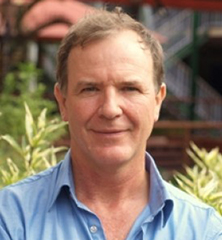You are here
Statement by Professor Stephen Garnett on World Migratory Bird Day 2019

Professor Stephen Garnett
CMS COP-Appointed Scientific Councillor for Birds
Charles Darwin University, Australia
Since March this year I have watched in awe the tracks of 20 Far Eastern Curlew as they relayed back their positions on northward migration from Australia. Astonishing flights from the mudflats where they had spent the northern winter to coastal habitats throughout east Asia. From there they are moving north to their breeding grounds in the wetlands of northern China and eastern Russia.
Each point they land is significant. For the birds, they are places for refuelling after flights lasting days and covering thousands of kilometres. But they are also sites of new dangers, new threats to the extraordinary migration they and their ancestors have been making year on year for millennia. Hunting, pollution, development, wetland drainage, invasive species – each site has its own menu of dangers that the curlews must survive.
For those of us wishing to conserve the curlew, they are action points, places where we can work in partnership with local communities to keep the environment productive for their transient visitors. Just as the birds need the mudflats to be healthy for their livelihoods, so too do local people at most of the sites the curlew visit. Those of us who love avian migrations must extend our love to those whose lands and seas they visit.
So, on World Migratory Bird Day, I think both of the birds migrating and the many people whose lives they touch as they pass. I think of the common problems both birds and people face as human impacts deepen along migratory pathways, but also how migratory birds have the potential to create ties across cultures and geographies for creating a world that is better for all of us.
One metaphor for migration is a chain which can be broken at the weakest link, tenuous global filigree where each strand is fragile.
But chains are also metaphors for strength. When I think of the great avian migrations, I can also envisage a mighty chain of human flyway communities linked in a unity of purpose to restore or maintain the environmental health of each of the places the migrants visit. Bird migrations are one of the grandest of nature’s wonders. They deserve grand visions among those who are privileged to witness them.
